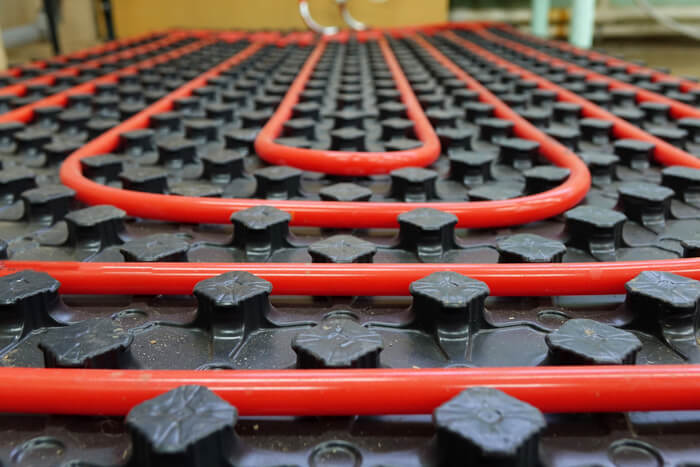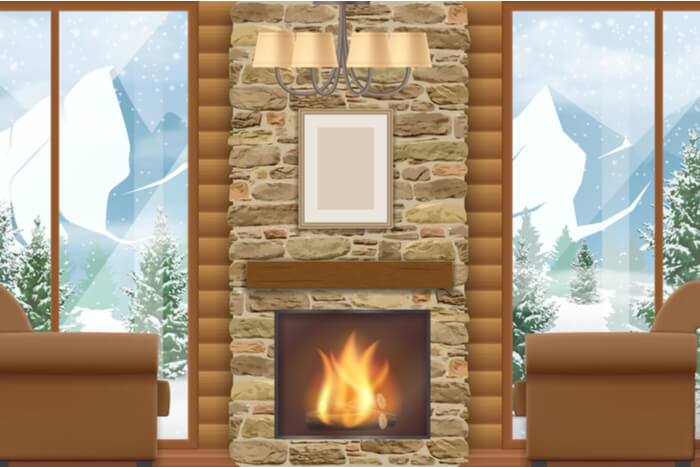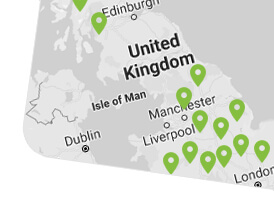A residential cabin, surrounded by a lush green garden that oozes out a sense of calmness and tranquillity, is the best place on earth to call home. The style, beauty and comfort of residential cabins cannot be challenged by any other type of abode.

Living in a log house has several benefits including improved mental and physical health. A major reason for the health improvement is the fact that residential cabins are quite cosy and comfortable and provide a stable internal climate without any fluctuations or without getting affected by the external weather.
In cold climatic conditions, residential cabins provide natural insulation from cold climate outside but under very cold conditions, it is important to implement measures to heat the residential cabin from within. There are few tips that you could consider for your heating requirements in the residential cabin.
Using the Right Quality Timber
To ensure that you have the right heating in your residential cabin, it is important to implement effective measures right at the time of the construction of the cabin. Wood is a natural insulator and will protect your residential cabin from falling temperatures.
Select good quality timber to construct your residential cabin. It will provide the right insulation to your cabin and prevent the internal temperatures of the cabin from dropping. It facilitates the heating of the interiors of your residential cabin under extremely cold conditions.
* Select the right timber while constructing your residential cabin. * Use high quality wood with proper lamination. * Good quality timber will insulate the interiors of your residential log cabin from low external temperatures. * The insulation will also help with a low requirement for other heating equipment and systems. * It will keep the interiors of the cabin warm reducing the heating requirements. * It is also a highly energy efficient method and reduces the cost associated with heating the interiors of your residential cabin.Fireplace
Having a fireplace in a residential cabin gives it an exquisite look. Apart from the aesthetic value of the fireplace, it is also an important heating system in residential cabins. The fireplace is a traditional heating method that has existed for centuries.

Using fire to keep the body warm in cold weather is a system that is in use since the time humans learnt to use fire. A fireplace in a residential cabin is also a cost-effective measure. If you have a garden (more information about wooden garden buildings) with trees surrounding your residential cabin, you can easily find the wood required for the fireplace.
You do not have to chop trees for the firewood. Instead, you can collect fallen branches of the tree or those branches that are dead or rotten. Autumn is a good time to collect such wood as you would easily find a lot of dead wood that have fallen off the trees in your garden.
If you live in a place that faces snowfall or rains in winter, there will be lots of fallen branches in your garden. This way you will save cost that you would otherwise incur as fuel expenses for your heating requirements.
Burning wood in the fireplace has few negative aspects to it. First, it generates smoke and if the chimney is not clean, the smoke might spread into your room. Second, burning of wood releases carbon dioxide and other harmful gases into the atmosphere.
It is harmful to health and will pollute the environment around your residential cabin and third, fire from the fireplace poses hazards to the wooden structure of your residential cabin.
* The fireplace is a traditional method of heating. * Use old and waste wood from your garden as firewood. * Collect branches of trees that have fallen from trees in autumn, rains and due to snow. * Chop dead or rotten branches from trees to use them as firewood. * Check your chimney before using it as well as periodically while using the fireplace to ensure that there is no blockage in it.Electric Heating
Electric heating involves using electrical equipment such as heaters for controlling the temperature inside the residential cabin. Electric heating is more expensive but is highly beneficial. Unlike fireplace, there is no smoke emission or fire hazards.
Electric heating does not pollute the environment and is much safer than firewood. There are no toxic fumes emitting from electric heaters and there are no chances of fire. An electric heating system also requires much less space as compared to a fireplace.
For residential cabins that rely on electrical equipment for their heating requirements, it is critical that before winter begins these systems are checked for any damages and are repaired to ensure the right performance during colder periods.
* Electric heating is more environment friendly as compared to a traditional fireplace. * It is less polluting and does not result in the emission of toxic fumes. * Electric heating systems require much less space than a fireplace. * The risk of fire is eliminated by using electric heating systems. * It is critical that the electric heating apparatus are in good working conditions during winter.Radiant Heating
Radiant heating is more beneficial as compared to direct heating. While building your residential cabin, you can consider designs around your fireplace or electric heating systems that support radiant heating.

The residential log cabin design can constitute features for radiant ceiling heating, underfloor heating or wall heating. In the radiant heating system, the heat is first transferred to the structure of the cabin and this heat then warms objects and people in the room rather than directly transferring heat from the electric heating system or the fireplace.
Radiant heating is a better system of temperature control as compared to direct heating and maintains the warmth of the rooms for a longer period as compared to direct heating.
While choosing the heating systems for your residential cabin, you need to analyse the shape and design of your cabin, the quality and the kind of wood used to construct it as well as other factors such as cost and availability of wood or electricity. Selecting the right heating process results in the reduction of pollution and costs associated with it.












